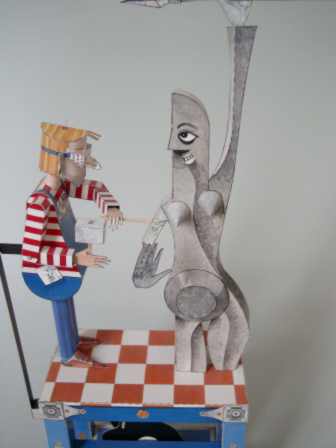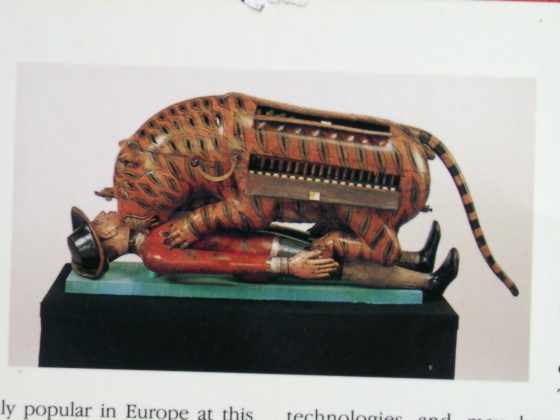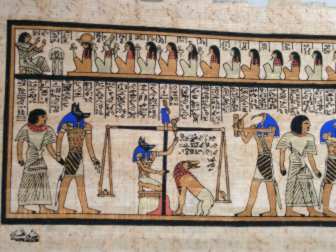| |
3. The Models
a. The Tower Bridge
Newstead has designed the model "Tower Bridge" for
the show "Tower Bridge Experience". It describes a real event which happened
in December 1952. Then the driver of a public service bus no. 78 missed the
red traffic lights, broke through the chain and raced towards the opening
bridge. Miraculously the bus jumped over the gap and made a soft landing
on the other side.
This model shows two movements, the opening bridge and the going bus. The
bridge is opened by a cam which resembles a flattened eccentric disc. The
bus is attached to a holder which is pushed on the crankshaft and turns round
and round with it.
b. The Sculptor
The model "The Sculptor" has been designed exlucsively
for the Tate Gallery. It tells a story that could be a traumatic situation
for each artist. The sculptor has nearly finished a female statue and puts
the finishing touches to the shaping of the arm. Just a few hammer blows
- and then he has a little accident: the arm of the statue breaks off, the
expression on the face of the statue turns into pain and horror and the sculptor
frightened ducks his head.
There are four movements in this model: the blowing of the hammer, the breaking
of the arm, the expression on the statue's face and the retraction of the
sculpture's head.
The sculpture's arm with the hammer is driven by a cam with four lobes which
make the hammer blow four times. In the first half of the crank rotation
nothing happens, the hammer is in a waiting position. The arm and the expression
on the statue's face are driven by a lobed cam. Most of the time nothing
happens, the radius remains the same. That's the phase, when the sculptor
is hammering. Then the arm breaks off abruptly - the cam follower falls from
its highest point to the lowest. Then the curve of the cam increases again
quickly which achieves a repair of the statue, the arm goes up again.
For both cams Newstead uses a lever-push- rod-combination and makes use of
the longer load arms to increase the movement. On the arm lever he fastens
a second push rod which carries the head of the sculptor. |
|
|








